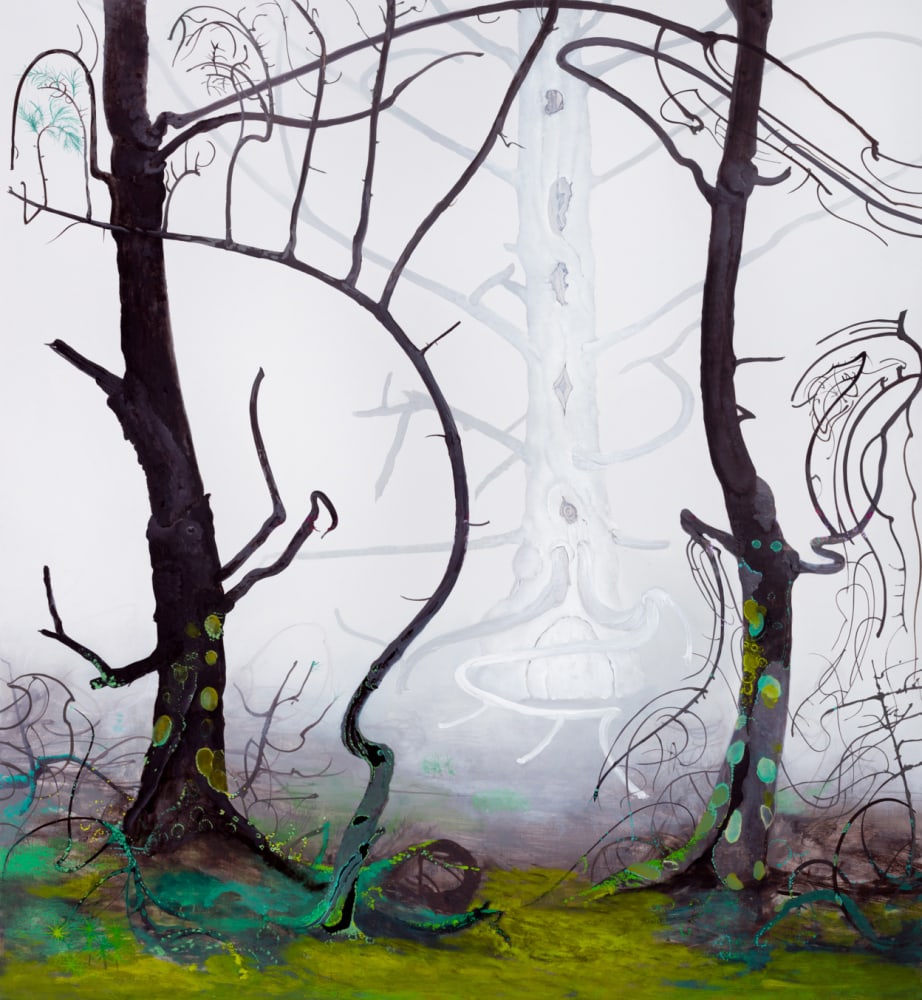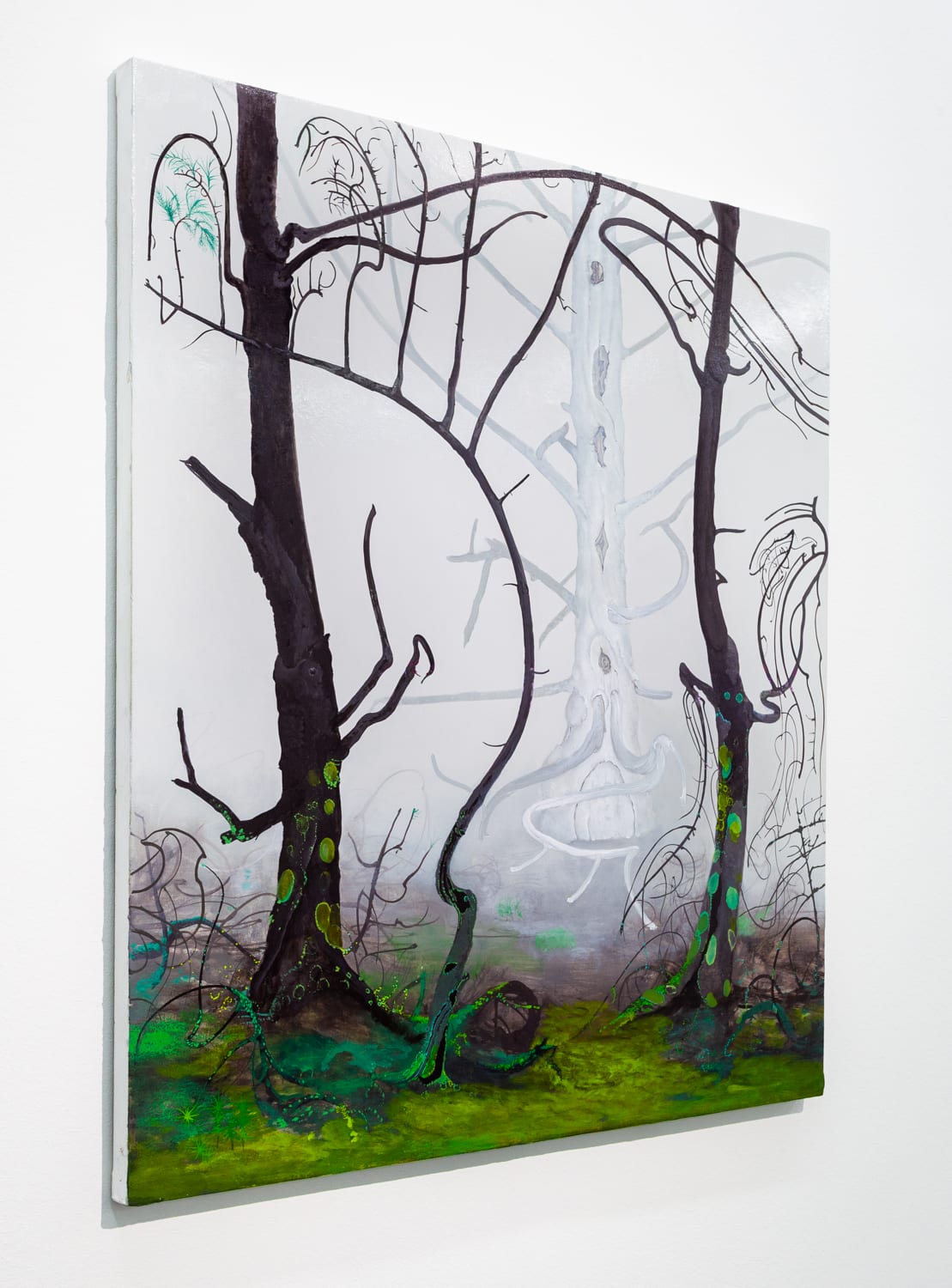-
Artworks
Inka Essenhigh USA, b. 1969
Decomposing Forest, 2019Enamel on canvas44 x 40 x 2 in
111.8 x 101.6 x 5.1 cm7139Further images
This painting is part of Inka Essenhigh’s Uchronia series, which debuted in her solo exhibition at Kavi Gupta in 2019. The series envisages a hypothetical, idyllic future for the inhabitants...This painting is part of Inka Essenhigh’s Uchronia series, which debuted in her solo exhibition at Kavi Gupta in 2019. The series envisages a hypothetical, idyllic future for the inhabitants of Earth. Questioning whether our species will adapt to the challenges of the late Holocene or follow the path to extinction forged by countless other species, Essenhigh imagines the multitude of plausible realities towards which we might be headed. She wonders: “Can painting a beautiful future help make it come true? If we have a picture of what we want, can we head towards that?”
Like ancient, Roman murals, whose fractured scenes remind us that violence and mysticism was part of our past nature, Essenhigh’s Uchronic images show our progeny living in harmony with nature in a blazing world, re-telling the human story to affect our imagined destiny. “The paintings do not show a complete picture,” says Essenhigh, “but rather fragments where we have to wonder how much is symbolic, how much is abstracted, or how much is literal."
In Decomposing Forest the scene is the early period of climate engineering. While genetic engineering (especially biomimetics) were flourishing under human oversight, new natural developments in evolution rapidly diversified and proliferated, aided in part by reconciliatory ecology. Mosses and lichens present help to date the image, as their biodiversity rapidly changed in the period. The presence of Peltigera lepidophora indicates the image is from no later than 2300 C.E.
Says Essenhigh, "This Uchronia may have problems. All these paintings show is that the biggest threat to our survival—ecological extinction—has been solved. I’m not posing these pictures as definitive answers. I’m posing them as possibilities—a way to begin the conversation about what we want our future to look like. Some of the paintings are presented as relics, as if to implant a memory in the viewer’s subconscious. The question is, do we believe it?”






